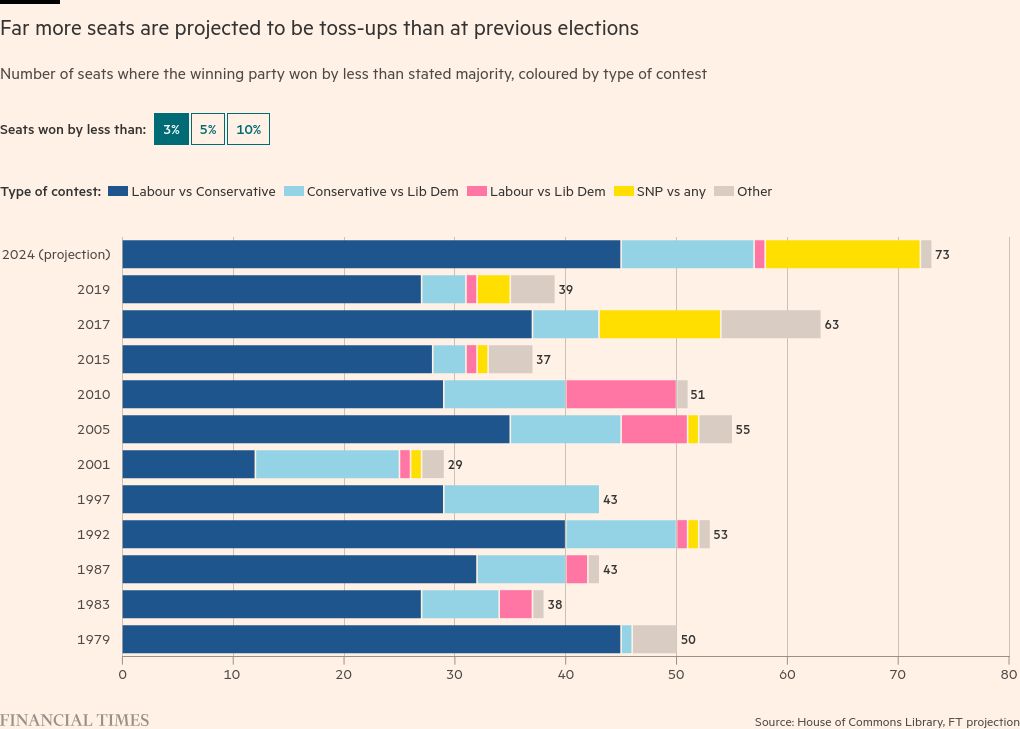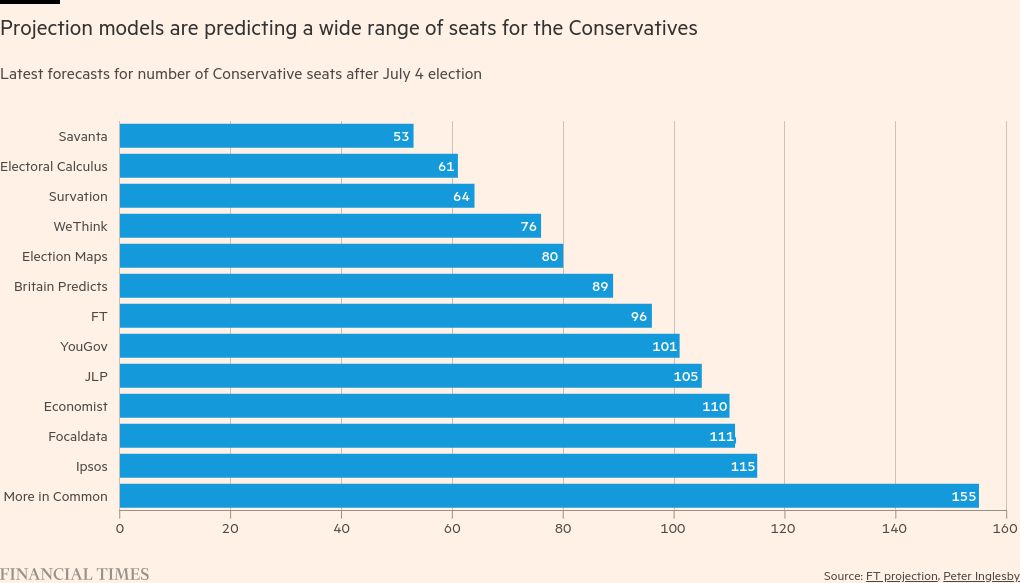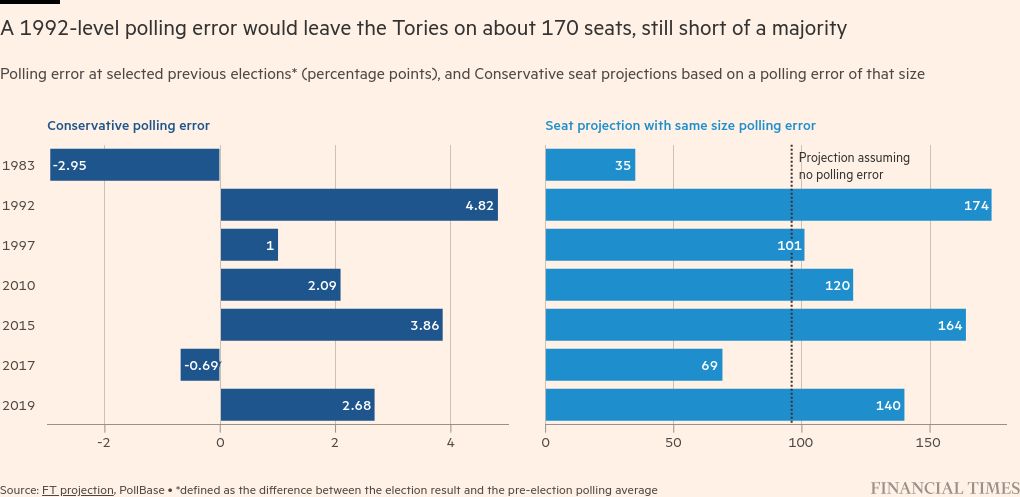
Unlock the Editor’s Digest for free
Roula Khalaf, Editor of the FT, selects her favourite stories in this weekly newsletter.
Polls all agree that the Conservatives are heading towards an electoral defeat on Thursday — but the scale of the potential rout remains unclear.
Historically, Britain’s electoral map featured a large number of safe Labour and safe Tory seats, with only a few real battlegrounds where the election was thrashed out.
But the nationwide collapse of the once-solid Conservative vote means there are now about 120 seats where the margin of victory is expected to be fewer than 5 percentage points, according to the Financial Times’ projection model.
Some 102 such contests involve Conservative candidates — meaning the party’s electoral fortunes will be shaped by a relative handful of voters spread across the country.
Depending on how these knife-edge seats vote, the Tories could win as many as 146 seats in parliament — or as few as 44.
With so many tight contests, a small change in turnout or a last-minute shift in public opinion in either direction could tip the balance one way or the other.
“There’s many more battleground seats than there usually are,” said Damian Lyons Lowe, chief executive of Survation, a pollster. “We’ve got battleground seats all over the map — there are super-safe Conservative seats that are that are now three-way marginals between the Conservatives, Labour and Reform.”

In older, Brexit-backing areas that heavily broke for Boris Johnson in 2019, Tory support has bled away to Nigel Farage’s Reform party, putting Labour in potential range of victory even if its vote share barely increases.
Seats such as Basildon and Billericay, where the Conservatives won 66 per cent of the vote at the last election, could now become three-way contests.
The Conservative party chair Richard Holden, who was controversially parachuted into the constituency, is forecast to lose the seat to either Labour or Reform in seven of the 13 projection models analysed by the FT.
The sheer variation of possibilities is shown by the divergence in pollsters’ forecasts.
“You’ve got a lot of variance in estimates, because this is a ‘change’ election with a lot of extra turbulence,” said Lyons Lowe.
In total, the Conservatives are forecast to win anywhere between 53 and 155 seats by the different projection models, which consist of both large-scale Multilevel Regression and Poststratification (MRP) polls as well as other approaches.

Much of this variation between models is driven by the share of the national vote the Conservatives are expected to win. While the party is averaging about 20 per cent in the FT’s poll tracker, individual polls vary anywhere from 18 per cent to 24 per cent.
The Tories’ greatest electoral hope is that the polling industry is systematically underestimating them — as it did in 1992 when the party performed about 5 percentage points better than the pre-election polling average and handed Sir John Major another full term in office.
But even a 1992-level polling miss based on current support levels would only net them about 170 seats, far short of the 325 needed to win a majority.
